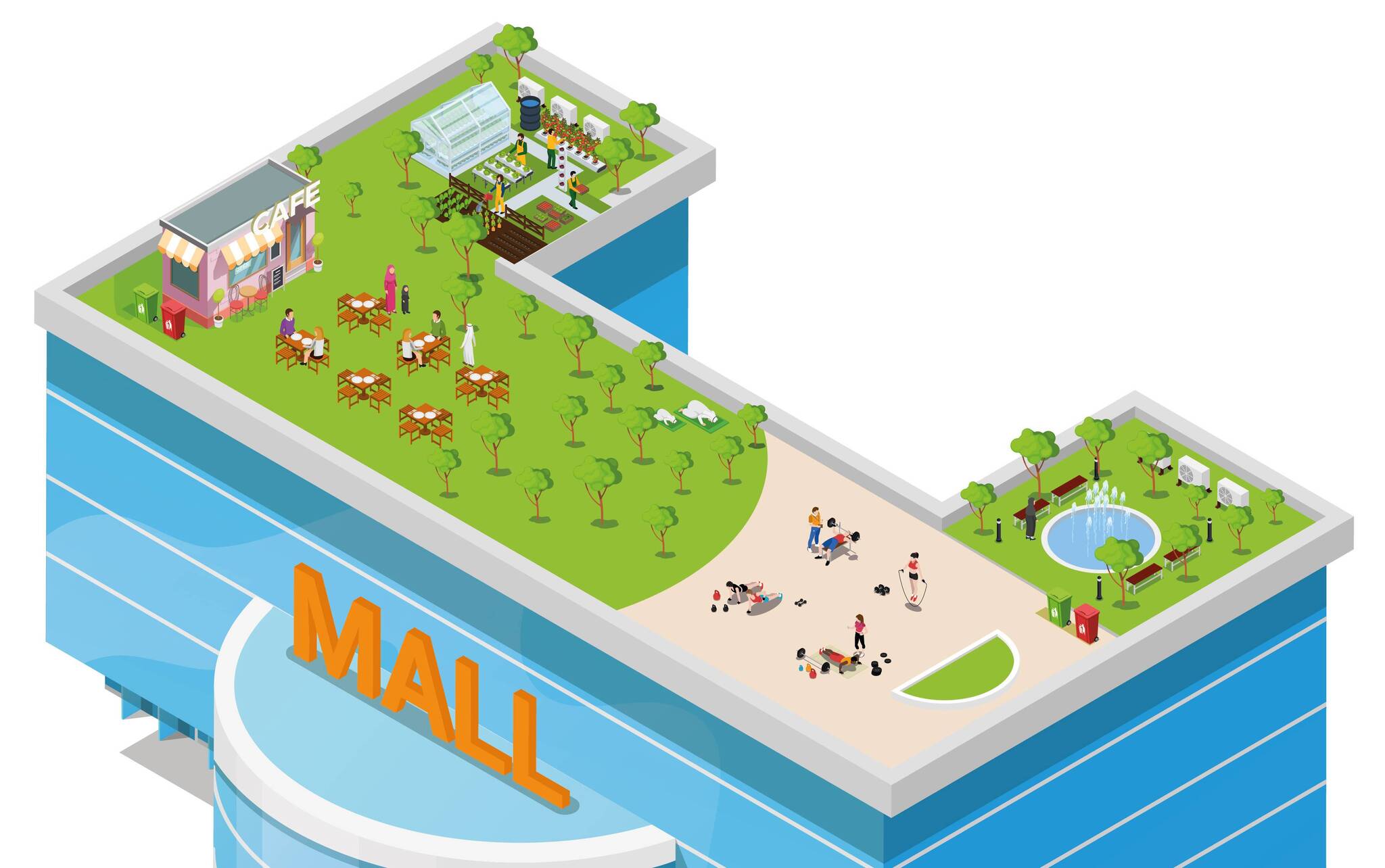
What if we told you that you could cool your city down, make residents happier and healthier, decrease energy bills, increase biodiversity, conserve water, improve air quality and ultimately, make your city fit for the future?
What if we told you that all of these long-term goals are achievable by adopting a living roof strategy?
Although living roofs date back thousands of years, modern living roofs were developed in Germany in the 1960s. And in recent years, they have gained more attention in the media and are seen more frequently within cities and new developments. Ultimately, this is because they support the global vision for a more sustainable world and support several of the UN's Sustainable Development Goals1. They also offer many tangible benefits to city dwellers and developers.
What are living roofs?
Living roofs, or green roofs, are building roofs that are partially or completely covered in vegetation. There are a huge number of living roof variations, but there are three commonly-known types:
- Extensive – these roofs are the most basic of living roofs and are usually thin in plant depth, lightweight and low maintenance. Some people may have extensive living roofs on their homes.
- Semi intensive – these are a variation of extensive roofs, with areas of higher plant depths.
- Intensive – these roofs are thicker and heavier, allowing for a much more complex living roof and amenity space for people to enjoy. They are typically found on commercial buildings, due to their weight, and are high maintenance.
The type of roof appropriate for a particular building depends on the roof space available, the type of building and its use, the desired results and of course, budget.
Why living roofs?
Although living roofs involve an initial investment to set-up, the benefits they offer far outweigh the cost when considering long-term outcomes. Here are just some of the reasons why living roofs should be part of every city strategy:
Health and well-being benefits
- Health benefits - Studies have shown that being around green spaces aids positive well-being. These include both mental health benefits (such as reduction of stress) and physical health benefits (such as direct improvements in a person’s heart rate and blood-pressure).
- Noise reduction – an extensive living roof can reduce outside noise by 40 decibels2.
- Improved fitness goals - More than 90% of people feel that green spaces help encourage them or others to keep fit and healthy3.
- Less indoor air pollution – according to a new study4, living roofs may improve the indoor air quality of commercial buildings by cutting the amount of ozone coming in from outside.
- Healthier workplace – there is evidence to suggest that the air quality improvements and thermal benefits provided by living roofs support a healthier workforce and less absences5.
- Reduction of electromagnetic radiation – they are also capable of reducing electromagnetic radiation penetration by 99.4%2.
Other benefits
- Energy efficiency – living roofs reduce energy costs by absorbing heat instead of attracting it, this can reduce AC energy by 75%6.
- Amenity creation – living roofs create attractive amenity and multi-functional spaces for the community to enjoy. It could be as simple as a garden or park or could be more complex, featuring running tracks, a café and plots for growing food.
- Heightened market value – green roofs enhance marketability of developments, increasing building value by up to 15%7.
- Cooler climate – living roofs are capable of creating a much cooler climate, helping to combat the urban heat island effect and global warming.
- Fire retardation – living roofs have a lower burning heat load than a conventional roof and follow local fire codes2.
- Less wasted space – living roofs offer a great solution for otherwise unused or wasted rooftop space.


No green without blue
In simple terms, there can be no green without blue – because without water, nothing can grow or survive. A huge benefit of a living roof is its ability to manage water much more effectively than a traditional roof. This is particularly beneficial in cities and urban spaces, which are often filled with impermeable surfaces and therefore have less space for water.
Innovative water management systems can be incorporated into living roofs to capture rainwater at source and reduce stormwater runoff. It can then be stored and reused for passive irrigation of green areas, in-house utilities or car washing, for example. Alternatively, it can be released at a controlled and reduced rate to limit the strain on sewer systems and prevent the risk of flooding.
Our award-nominated shallow geocellular water management system, Permavoid, has been designed to do just this. An ideal Sustainable urban Drainage System (SuDS) application, Permavoid can be installed within a living roof to capture, manage and release water.
Our team of experts are on hand to discuss our approach and solutions for implementing living roofs and blue-green infrastructure.
Contact us today to discuss the transformative solutions for your project:
Tel: +971 (0) 4 518 3000
Email: middleeast@polypipe.com
1 UN Sustainable Development Goals
2 Green Roofs for Healthy Cities
3 The Value of our Green Spaces, The Land Trust
6 National Research Council Canada
7 stok
